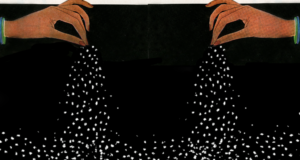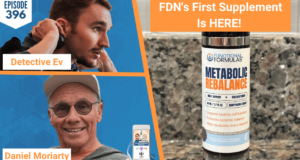“Ozempic Face,” a non-medical side effect of rapid weight loss from GLP-1 medications is becoming more widespread as the medication gains popularity. However, there are preventions and treatments that can minimize these effects.
Over the last few years, Ozempic has gained widespread attention, not just for its ability to manage type 2 diabetes but for its impressive weight loss effects. As more people turn to the medication containing the active ingredient semaglutide, it has sparked a wave of interest in its potential to help shed pounds. However, alongside its growing popularity, there has been increasing discussion about possible side effects, with one of the most talked-about being the phenomenon known as “Ozempic face.”


Ozempic is a medication primarily used to manage blood sugar levels in adults with type 2 diabetes while also aiding in weight loss. It works by mimicking a natural protein in the body called glucagon-like peptide 1 (GLP-1). By activating GLP-1 receptors, Ozempic increases insulin production, helping control blood sugar and curb appetite, making it an effective tool for both diabetes management and weight loss.
What is Ozempic Face?
Ozempic Face is a non-medical term used to describe the facial changes that can occur as a result of rapid weight loss. “Dermatologist Hannah Kopelman states, “When we talk about ‘Ozempic face,’ it’s essentially the result of significant weight loss—particularly rapid weight loss—causing a reduction in the underlying fat in the face. This fat helps give our face volume and a youthful, full appearance.” When we lose weight, especially at a rapid rate, fat is lost not only from our body but also from our face. As we lose that fat, especially quickly, the skin can show signs of sagging, more pronounced wrinkles, and take on a gaunt or hollow look.
Symptoms of Ozempic Face
- Loss of facial fat: The most noticeable difference of Ozempic Face is the loss of fat under the skin
- Sagging, loose skin: The skin may become loose as it struggles to adapt to the reduction in fat.
- Pronounced features: As facial fat decreases, bones and features such as cheekbones and jawlines can appear sharper.
- Wrinkled, aging skin: Without the fat to plump the skin, it can look more wrinkled or aged, especially around the forehead, eyes, and mouth.
- Gaunt look: The face can take on a more hollow or sunken appearance.
It’s important to note that this phenomenon isn’t unique to Ozempic. Kopelman says it “can happen with any form of significant weight loss, but it’s been highlighted with Ozempic use because of how quickly patients lose weight on these medications.” Other GLP-1 medications like Wegovy, Zepbound, and Mounjaro can also cause the same symptoms.
“It’s really the speed at which the weight comes off that plays a huge role here,” Kopelman explains. “With rapid weight loss, the skin doesn’t have as much time to adapt and retract, which leads to a more noticeable sagging and gaunt appearance. Slower, more gradual weight loss tends to be gentler on the skin, allowing it to adjust and potentially minimizing these effects, although some skin laxity and volume loss is inevitable with any substantial weight loss.”
How to Avoid Ozempic Face
Since Ozempic Face isn’t a formal condition, no official medical treatment exists. However, there are steps you can take to minimize its impact:
Avoid rapid weight loss. A slower, steadier approach to weight loss can give your skin time to adjust, reducing sagging. If you notice signs of Ozempic face developing, talk to your doctor about lowering your dosage to prevent further symptoms from occurring while still losing weight.
Eat a healthy, balanced diet. Focus on whole foods, including lean proteins, whole grains, and plenty of fruits and vegetables. Nutrients like omega-3s, for example, found in fish and flaxseeds, help keep the skin moisturized. Vitamin C, on the other hand, can also help combat wrinkles by boosting collagen production.
Stay hydrated. Hydration is key to maintaining skin elasticity and avoiding a dull, wrinkled appearance. Drinking lots of water and consuming fruits and vegetables with a high water content, like cucumbers and watermelon, can support healthy skin.
Use skincare products: For those who want to jump ahead of the curb in prevention, Kopelman recommends focusing on ingredients that help with skin hydration and collagen support. Look for moisturizers and serums with:
- Hyaluronic acid (helps plump the skin by attracting water and peptides, which can support collagen production) (Try HUMs Hyaluronic Glow Gummies for a hydrated collagen boost.)
- Retinoids (can improve skin elasticity and reduce the appearance of wrinkles. Kopelman notes that retinoids should be used cautiously, especially if the skin is already sensitive from rapid weight loss)
- Antioxidants (e.g., vitamin C) (helps protect the skin from environmental damage and can boost collagen production)
- Niacinamide (helps with overall skin health and barrier repair, keeping the skin looking more youthful)
- Sunscreen (using daily can help minimize premature aging, wrinkles, and sagging skin that can come from too much time in the sun
- HUMs Collagen Love contains collagen peptides which helps with skin elasticity and firming of the skin. It also has vitamin C which fights skin-damage and hyaluronic acid for plump, glowing skin.
Alongside professional treatments, it’s essential to maintain a consistent at-home routine to care for your skin. The same skincare products you use to prevent the signs of Ozempic face can also help address and treat any appearances that do develop. Additionally, the same concept applies to continuing with a nutritious diet. Consuming a variety of whole foods supplies your body with essential vitamins and minerals to promote healthier, more youthful skin, and it works as both a preventive measure and a way to treat aging signs.
The Takeaway on Ozempic Face
Though Ozempic Face isn’t a medical condition, it is a cosmetic concern that can impact your confidence, resulting from rapid weight loss. To reduce the likelihood of experiencing these changes, aim for gradual weight loss, prioritize a nutritious diet, stay well-hydrated, and incorporate effective skincare products. If you’re already noticing signs of facial aging, treatments such as dermal fillers or PRP can help rejuvenate your appearance and restore volume for a more youthful look.




